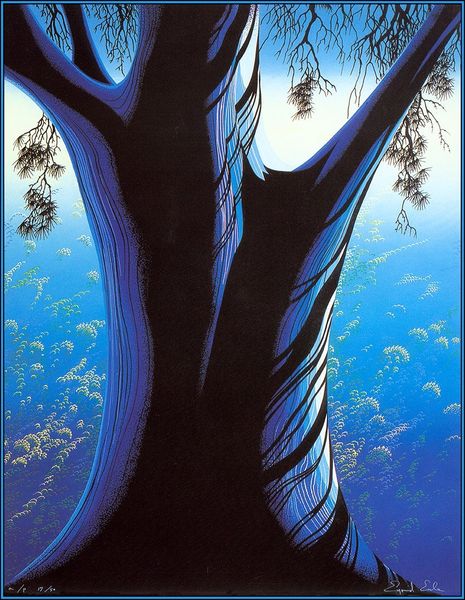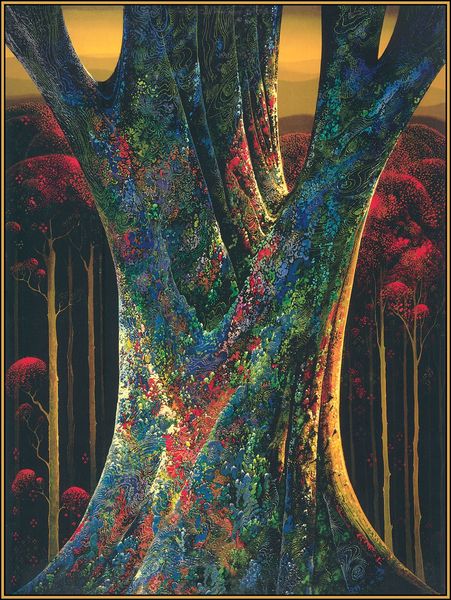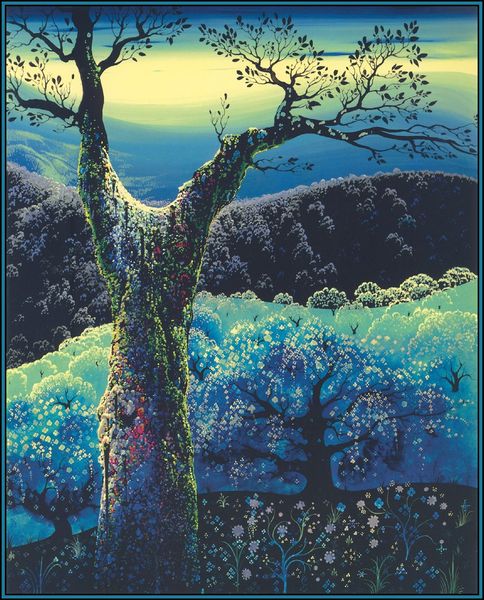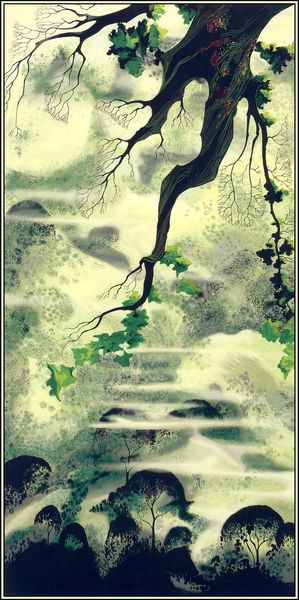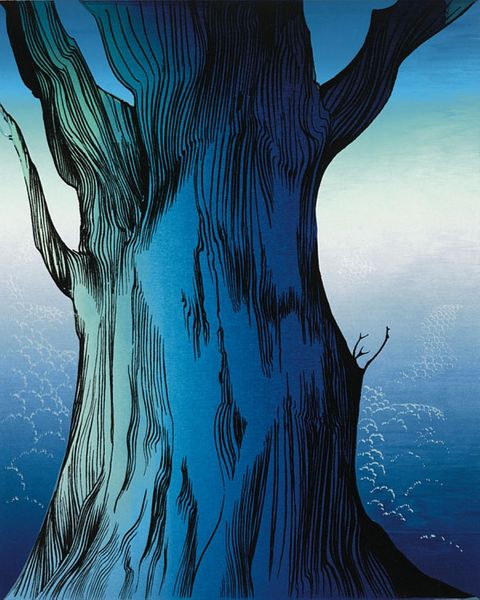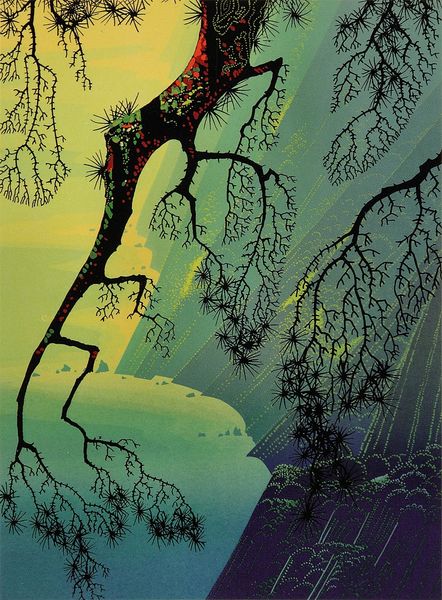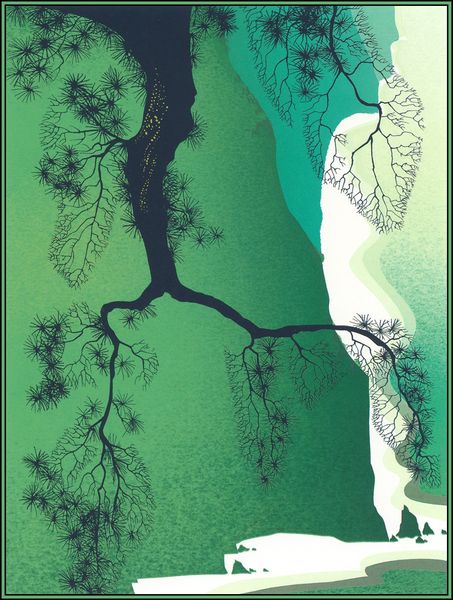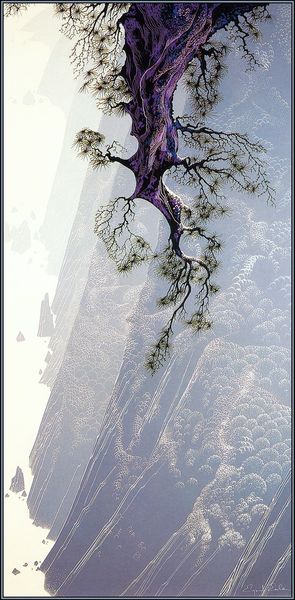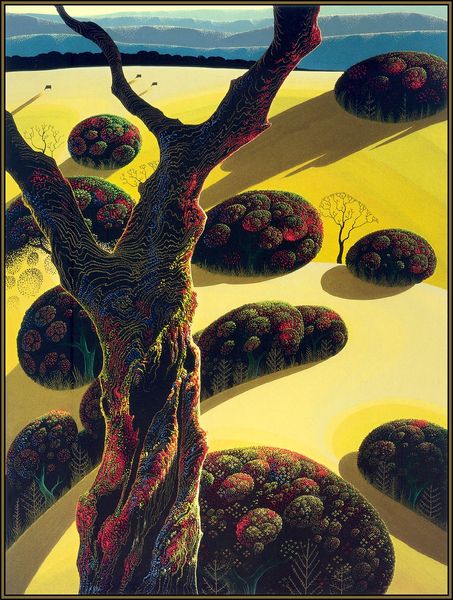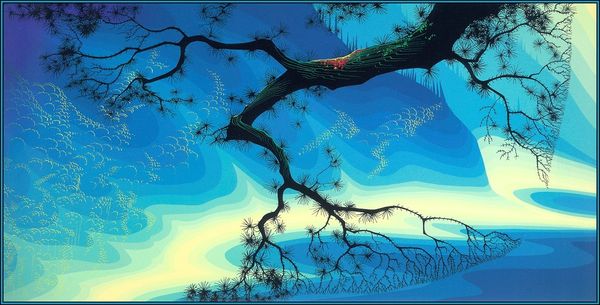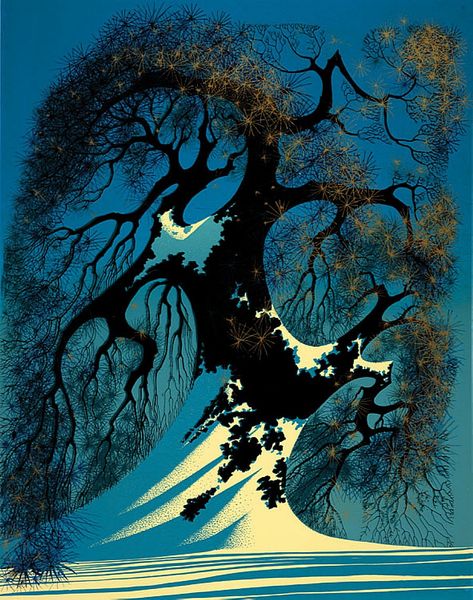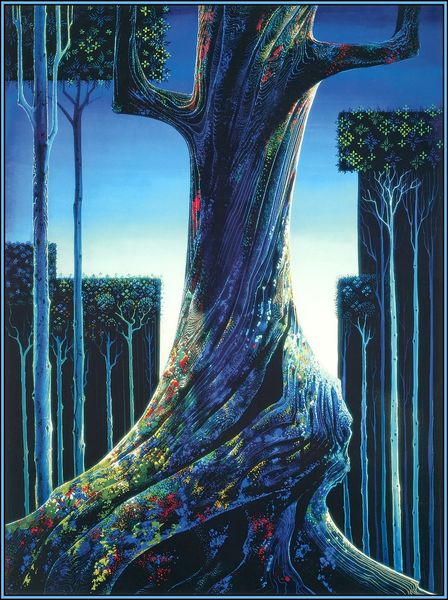
painting, impasto
#
tree
#
painting
#
landscape
#
impasto
#
geometric
#
watercolour illustration
Copyright: Eyvind Earle,Fair Use
Editor: Here we have "Solitary Bonsai," a painting by Eyvind Earle. It's all lush greens and blues, depicting a lone tree in an almost geometric landscape. It has a certain melancholy to it. What do you make of it? Curator: The solitude is striking, isn't it? But it's crucial to consider how concepts like "solitude" are often romanticized while ignoring the imposed isolation experienced by marginalized communities. Look at the way this bonsai, a symbol often tied to elitist tradition and carefully controlled environments, is presented. How might its "solitude" be read not as serene self-sufficiency, but as a result of forced displacement from a more diverse, natural ecosystem? Editor: That's a fascinating point! So, you're saying its loneliness isn't natural but rather a consequence of something else? Curator: Precisely. We can interpret the cultivated, almost artificial, rendering of nature as a critique of how power structures manipulate the environment and displace those most dependent on it. What do the precise lines, the calculated composition suggest to you in that context? Editor: It feels almost sterile, despite the vivid color. As if the wildness has been carefully managed and contained. Curator: Exactly! And who benefits from this containment? Whose vision of nature is being imposed here? This forces us to question how notions of beauty and serenity are often used to mask underlying inequalities. Perhaps it reflects larger issues of environmental justice and the uneven distribution of resources. Editor: I never would have seen all that. It gives me a lot to think about. Thanks. Curator: My pleasure. Keep questioning the narratives you see in art and everywhere else around you.
Comments
No comments
Be the first to comment and join the conversation on the ultimate creative platform.
